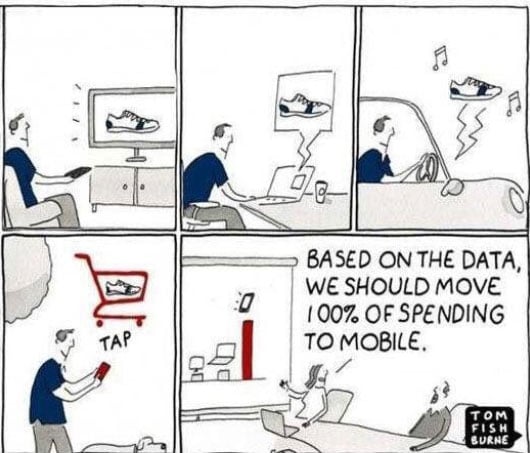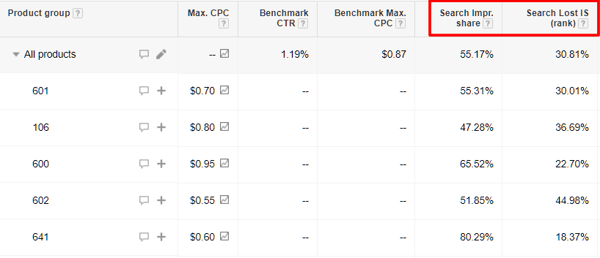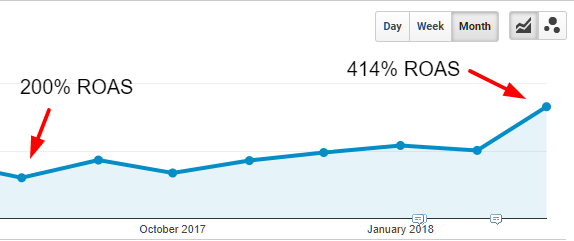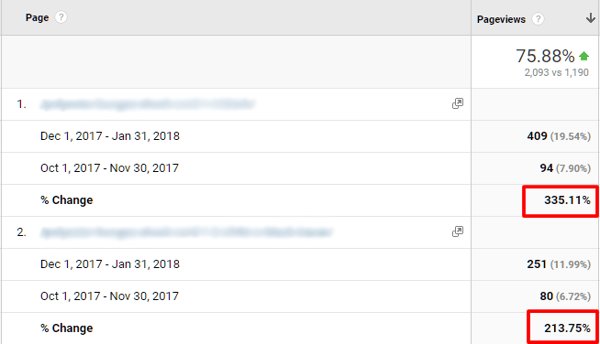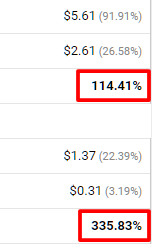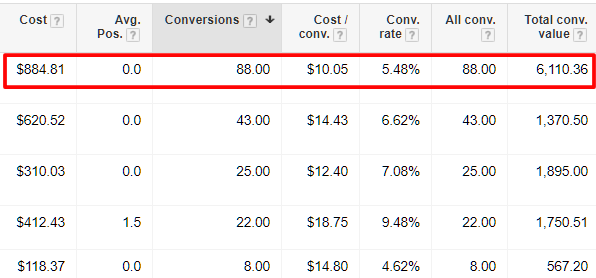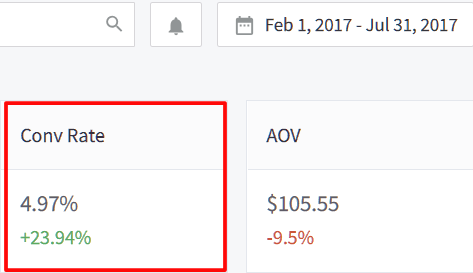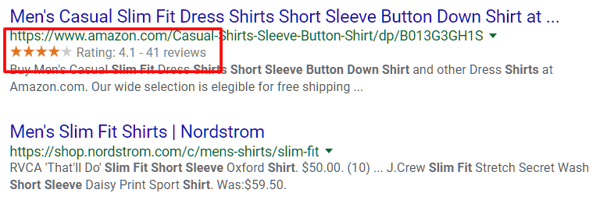When we first met this Rhode Island-based manufacturer over 3 years ago, they had no online presence–including a website.
Their business existed largely through wholesale relationships earned over time through their premium product and exceptional service.
Although they were complete strangers to E-commerce, the organization saw a clear opportunity to supplement their traditional wholesale business by entering the online marketplace.
Our digital marketing team at Trailblaze Marketing knew early on that building a solid foundation with a smart website structure would be critical to their long-term E-commerce success.
Choosing a Platform & Creating a Smart Structure
Picking the wrong platform for your online store can cost your business a lot of money in the long run.
You may be wondering:
Why is it such a big deal? It's just the website right?
Nope, the platform and host you choose will ultimately affect the level of control you have over your online business, including the website’s structure, responsiveness, speed, security, customer service, and much more.
WooCommerce holds more than 22% of the global market share for E-commerce platforms.
After careful deliberation and a full inventory of our client's existing and future needs, we chose BigCommerce, a popular software that offers a hosted E-commerce platform for building an online store.
This decision was primarily made based on two types of considerations:
1.) Business requirements
2.) User and customer requirements
As a BigCommerce partner, we felt confident with its integrations, plugins, CMS, level-of-customization, and ease-of-use for our client.
Below are some important questions you can use to assess your needs when selecting an E-commerce platform:
- What is the profile of your average customer? (This is important as it will determine most of your future needs, like device functionality, customer service, plugins, personalization, order fulfillment, and more)
- What existing processes, systems, and technology does your business have in place that will need to be integrated?
- Are you planning for rapid or conservative growth over the next few years?
- How much customization will your online store require?
- Will content play a big role in your online strategy? (Most E-commerce platforms have a weak content management system)
After getting the platform squared away, we began implementing what would become the the website's core conversion strategy:
- A simple path-to-purchase: no mandatory account sign-up, one-page checkout process, and a clear call-to-action on the homepage
- An abandoned carts solution: automatic follow-up emails and a retargeting campaign
- A logical website hierarchy with a clean URL structure
- Easy website navigation: internal links, product filtering options based on multiple dimensions, search bar with hundreds of tags
And by the way, it's far easier to implement this type of structure earlier than later.
If you do however adjust the hierarchy or URL structure of your website, make sure you spend time mapping the old URLs to the new ones.
This will make your life a whole lot easier when it comes time to redirect the old to the new.
Having taken these steps early on, our client sleeps just fine at night knowing their store conversion rate is 4%.

The average E-commerce conversion rate is between 1% and 2%, but varies considerably depending on the the industry.
Whatever you do, simplify the path-to-purchase.
During the initial site design we made the mistake of putting too many products on the homepage; in other words, we gave people too many options.
This problem was easily diagnosed using the behavior flow report in Google Analytics.
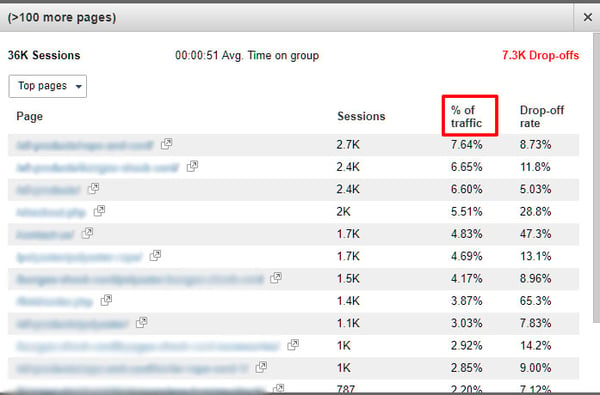
It was here we found that the bulk of their homepage visits went to just a few of the product category pages.
This insight has since prompted a homepage redesign which should only improve conversion rates further.
It gets better too:
Recently, we wanted to know exactly what these people were buying, so we created a custom segment in Google Analytics that included only homepage landing page sessions.

What we found was that 22% of the revenue generated from homepage landing page sessions was attributed to just 2% of the 167 products available (4 products).
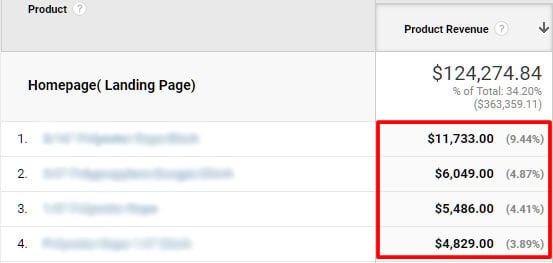
Pretty great insight, right?
If you're not using segments in Google Analytics you're missing out on an abundance of valuable data.
Building out the Money Pages
When it comes to E-commerce, category pages are where the traffic is earned, and product pages are where the money is made.
Optimizing these is critical.
Think about when you shop online, what are the on-page elements that draw your eye the most?
Probably high-quality images, a thoughtful product description with frequently asked questions, a shipping and return policy, and of course reviews.
More than 70% of all customers consult reviews or ratings before making a final purchase.
After the client's website proved to receive little organic traffic, we focused on creating unique and highly detailed content for each product and category page.
Although it proved challenging to do this for every product, we spent time interviewing our client and performing comprehensive keyword research to make sure each page was unique.
In fact, weak, duplicated content across online stores is an extremely common issue for E-commerce businesses which significantly restricts their growth.
To complement this transactional content, we recommended that our client begin blogging to target search queries with informational intent.
The goal of this was two-fold:
1.) Create site-wide topical relevancy, facilitating a search engine's understanding of the website
2.) Earn backlinks and then funnel that authority to the product pages through internal linking .

The organic profile of our client's website in 2018
Other actions we took to make sure these pages would convert:
- Made the page as simple and easy-to-read as possible, including less text around the CTA, no social icons, and a clear value proposition
- Used clear, high-quality images as well as video
- Clearly addressed the #1 reason for cart abandonment up front: shipping, returns, and any additional costs
- Enabled customer reviews for social proof
Want to see how Google defines a high quality E-commerce product page? Here's an example.
Developing a Profitable SEM E-commerce Program
With a solid foundation in place, we turned our focus to Google Shopping.
Each campaign was turning a profit, but we lacked impression share due to a restricted budget. Understandably, our client was apprehensive to invest further until we could prove a strong, consistent return-on-ad-spend.
Our marketing for this client was entirely service based, too, meaning we weren’t on retainer. On top of this, we began seeing increased competitive pressure from major retailers like Amazon, which was driving up costs.
All of this lead to one solution:
Focusing on the quality and structure of each paid campaign–allowing us to strategically decrease our acquisition costs.
Product listing ads accounted for 85% of paid clicks in Q1 of 2018.
Now, here's a little secret that most agencies keep to themselves...
The success of a Google Shopping campaign is largely based on the account structure. (Disagree? Tweet us @trailblaze_mktg and share why)
Yes, return-on-ad spend, product margin, cost-per-click, conversion rate, etc. all matter in the world of Google Shopping, but how you deal with commercial intent matters more.
Structuring your campaign around each level of intent allows you to spend more of your budget on the search queries that actually convert, while still driving demand at the top of the funnel.
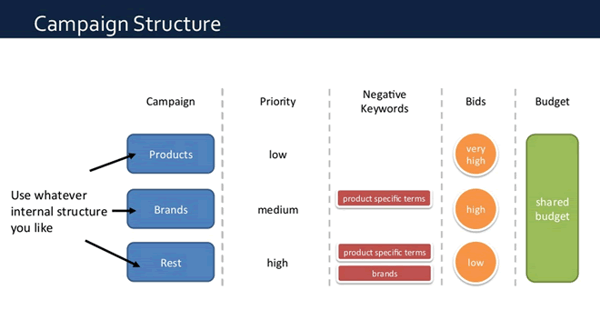
Think about this:
Does it make sense to pay the same per click for these two searches below?
Of course not.
That first search query indicates that they have no idea what they want, and that’s exactly why we don't want to pay much for the click.
Each purchase has to start somewhere though, and if your funnel is properly set up then you shouldn't worry about picking up those same searchers when they’re further along in the decision making process.
Assisted conversions is an overlooked metric that will help you gauge the role each channel, campaign, or ad group plays throughout the decision making process.
In fact, paid search has generated nearly $200,000 in assisted revenue alone.

This means that while customers saw our ads through Google, they ended up converting through another channel like organic, direct, referral, etc.
Pretty crazy, right?
It makes sense considering just 2% of first-time visitors to an online store will complete a transaction.
What are you doing to retain the other 98%?
When we first got started on the search network we made sure to spread budget around.
This was to test the waters to understand what products would sell, how often they would sell, and at what cost.
We also collected a bunch of data to apply to the SEO campaigns we would eventually run.
Here's what happened:
We quickly discovered that the majority of ROAS (return on advertising spend) from the search network was coming from a single ad group, our client’s flagship product.
Our next move was simple:
We cut every product from the search network except for their top seller (their flagship product) and continued running the other products on the shopping network.
The results were immediate:

This same lesson applies to negative keywords. Once you trim the fat by sculpting the search queries that trigger your ads, more budget becomes available for the products that generate a strong ROAS.
Optimizing for Desktop in a Mobile-first World
At this point, we were starting to collect some meaningful data, allowing for more aggressive bid adjustments.
We discovered that the majority of transactions were occurring during the week between 9am and 5pm on desktop computers.
At first we were puzzled.
We couldn’t understand why, in a world dominated by mobile, 84% of revenue was coming from desktops.
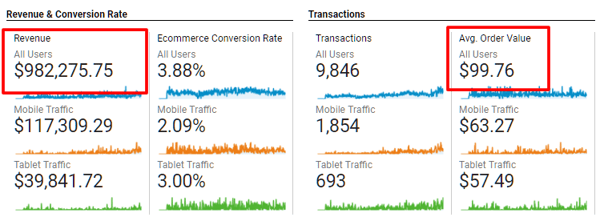
And then it hit us… B2B!
Although we had always known that businesses were a core audience for our client, we underestimated the exact role they played.
63% of revenue comes from just 13% of their customer base, who happen to be returning visitors.
-1.png?width=600&name=Screenshot%20(1)-1.png)
That’s right, 13% of their customers are responsible for over 63% of the revenue!
Insane.
Moral of the story? Although Google's mobile-first index is a real thing and worth optimizing for, you need understand YOUR target audience's behavior.
Battling E-Commerce Giants:
We don't have to tell you that Amazon is an absolute powerhouse in the world of E-commerce.
They were responsible for 44% of all U.S. E-commerce sales in 2017.
Let’s be real:
It’s impossible to compete with them on a brand level, you have to take the fight to the product level.
See, Amazon ranks for millions of keywords because of the OVERALL strength and authority of its domain. The authority of each product page is relatively weak since that authority is spread thin among millions of pages.
Amazon's $356 billion valuation is so big, it's larger than Wal-Mart, Target, Best Buy, Macy's, Kohl's, JCPenney, and Sears combined.
How to Compete with Amazon:
- Don’t be good at everything
- Be great at one or two things. Or, in our client’s case, focus on the premium quality that visitors simply won't find anywhere else.
- Amazon’s weakness is exactly what makes it so great to begin with. It offers everything for sale, and you can exploit this.
Click to tweet: Amazon’s weakness is exactly what makes it so great to begin with. It offers everything for sale, and you can exploit this.
- Use them
- Amazon is an absolute goldmine for content and keyword research. Between the suggested searches it offers when you type a product in, to the thousands of questions and comments customers will leave–this is all information that you can use to your advantage.
- Reverse engineer their product pages. Plug a popular product page into your favorite SEO tool like Ahrefs and check out all of the keywords it ranks for. You can find some incredible long-tail opportunities here.
- Can't beat 'em? Join them. Exploit Amazon's domain authority to rank products you can't compete for on your own website. This is called parasite SEO, and sometimes it's needed.
- Create an amazing customer experience
- Building the lifetime value of your customer starts here, but it’s more than just great customer service; it’s about creating an unforgettable experience at every touch point with your brand. This is an opportunity for personalizing every interaction your business has with a customer, something Amazon cannot do. By the way, it's incredibly cheaper to retain a customer than it is to acquire a new one.
Click to tweet: And by the way, it’s much cheaper to retain a customer than it is to acquire a new one.
- Leverage content
- Remember earlier when we said Amazon’s product pages don't carry much authority? Well, creating shareworthy content assets that are naturally amplified will earn backlinks and link equity, which you can then funnel over to your product and category pages through internal links for a nice bump in traffic.
Since we started with content marketing at the beginning of 2017, our team has written everything there is to know about our client’s product.

221% organic grow over 6 months
On top of this incredible organic growth, we’ve acquired plenty of backlinks in the process, and have established our client as an authority in their respective industry.
These same blog posts have assisted in plenty of transactions too:
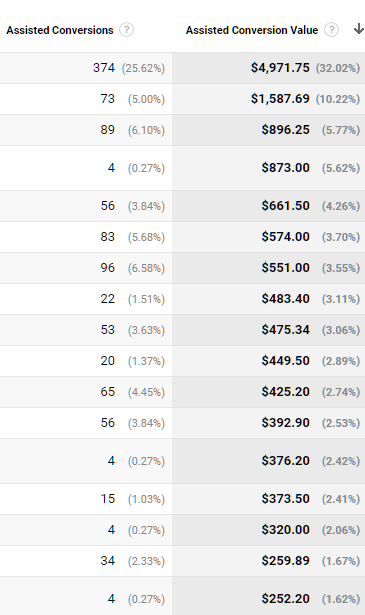












-1.png?width=600&name=Screenshot%20(1)-1.png)



